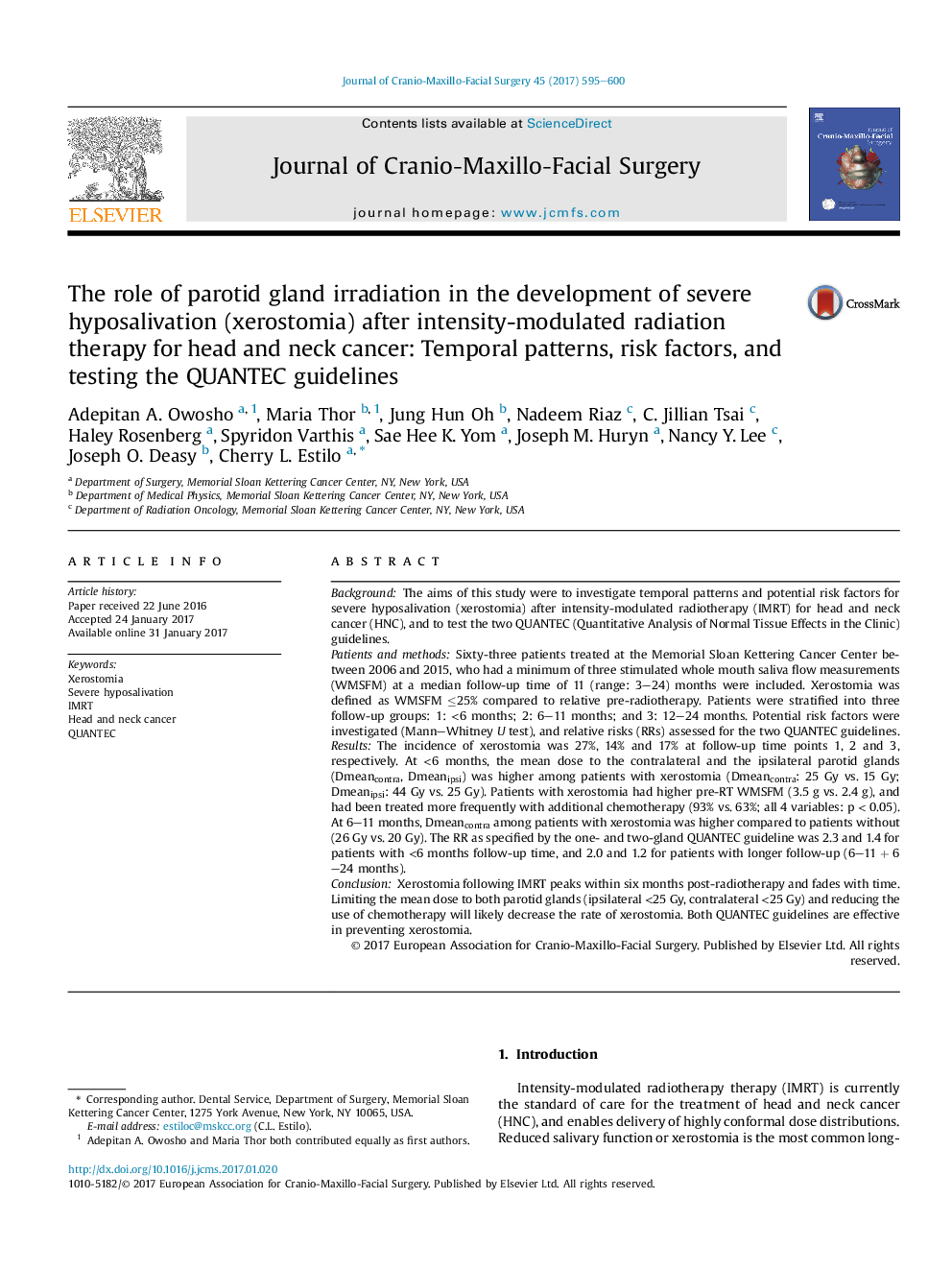| کد مقاله | کد نشریه | سال انتشار | مقاله انگلیسی | نسخه تمام متن |
|---|---|---|---|---|
| 5640201 | 1406807 | 2017 | 6 صفحه PDF | دانلود رایگان |

BackgroundThe aims of this study were to investigate temporal patterns and potential risk factors for severe hyposalivation (xerostomia) after intensity-modulated radiotherapy (IMRT) for head and neck cancer (HNC), and to test the two QUANTEC (Quantitative Analysis of Normal Tissue Effects in the Clinic) guidelines.Patients and methodsSixty-three patients treated at the Memorial Sloan Kettering Cancer Center between 2006 and 2015, who had a minimum of three stimulated whole mouth saliva flow measurements (WMSFM) at a median follow-up time of 11 (range: 3-24) months were included. Xerostomia was defined as WMSFM â¤25% compared to relative pre-radiotherapy. Patients were stratified into three follow-up groups: 1: <6 months; 2: 6-11 months; and 3: 12-24 months. Potential risk factors were investigated (Mann-Whitney U test), and relative risks (RRs) assessed for the two QUANTEC guidelines.ResultsThe incidence of xerostomia was 27%, 14% and 17% at follow-up time points 1, 2 and 3, respectively. At <6 months, the mean dose to the contralateral and the ipsilateral parotid glands (Dmeancontra, Dmeanipsi) was higher among patients with xerostomia (Dmeancontra: 25 Gy vs. 15 Gy; Dmeanipsi: 44 Gy vs. 25 Gy). Patients with xerostomia had higher pre-RT WMSFM (3.5 g vs. 2.4 g), and had been treated more frequently with additional chemotherapy (93% vs. 63%; all 4 variables: p < 0.05). At 6-11 months, Dmeancontra among patients with xerostomia was higher compared to patients without (26 Gy vs. 20 Gy). The RR as specified by the one- and two-gland QUANTEC guideline was 2.3 and 1.4 for patients with <6 months follow-up time, and 2.0 and 1.2 for patients with longer follow-up (6-11 + 6-24 months).ConclusionXerostomia following IMRT peaks within six months post-radiotherapy and fades with time. Limiting the mean dose to both parotid glands (ipsilateral <25 Gy, contralateral <25 Gy) and reducing the use of chemotherapy will likely decrease the rate of xerostomia. Both QUANTEC guidelines are effective in preventing xerostomia.
Journal: Journal of Cranio-Maxillofacial Surgery - Volume 45, Issue 4, April 2017, Pages 595-600